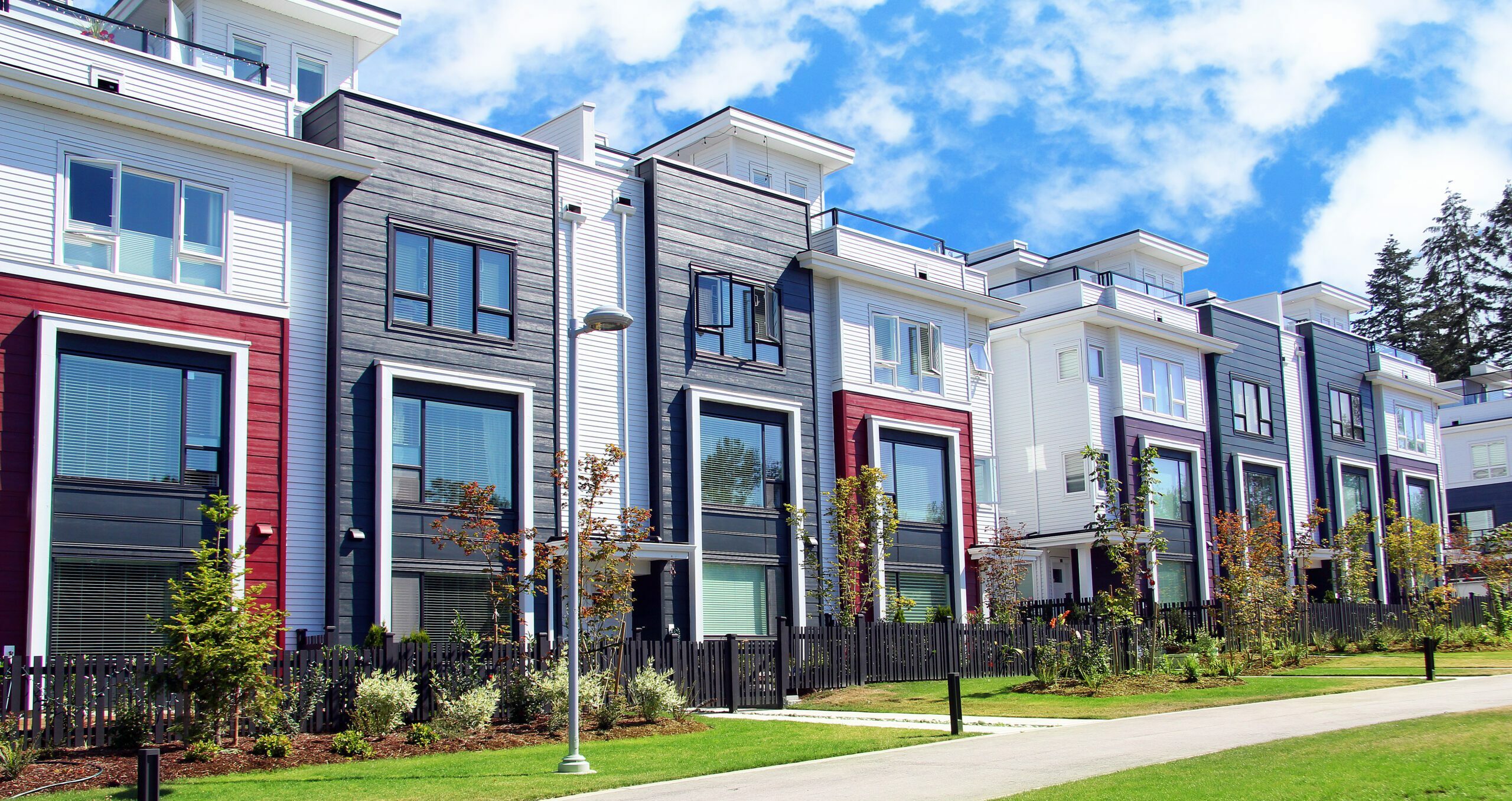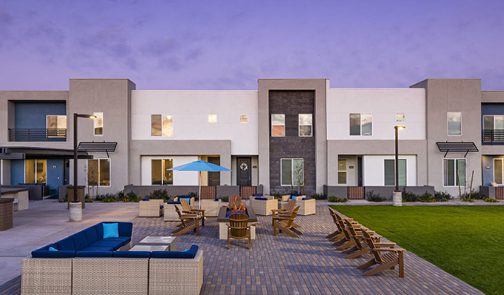Build-to-Rent Single Family: Early Takeaways from the First Movers

This new institutional property type’s potential position as either competitor or complement to single-family home ownership, one of the bedrocks of the U.S. economy and culture, has generated ample conversation. It also appears inevitable, as the demographic and economic drivers for more affordable, lower density housing are as clear as such trends get, and supply is, and is likely to remain, tight.
But for all the talk about BTR, and though it goes against the conventional wisdom to note it, we’ve seen relatively little actual investment activity in it. For example, though starts of purpose-built single-family homes were up 32.7% year-over-year in 2022, the 69,000 homes started is equivalent to 13.0% the of multifamily units started and just 0.4% of the existing inventory of single-family rentals in the U.S. With apparently solid fundamentals and relatively little investor activity, we therefore perceive plenty of room for growth and opportunity for investment.
BTR investment activity will likely remain relatively muted, however, until it generates a lengthier track record. We don’t yet have much data to help us underwrite market acceptance and how that translates into rents, positioning, lease-up pacing and occupancy, necessary features and amenities, product design, or even how investors will value BTR income.
Between RCLCO’s Real Estate Economics practice, which has conducted several strategy assignments and hundreds of market studies for BTR operators and investors, and RCLCO Fund Advisors (RFA), which has advised institutional investors to commit $1.1 billion in equity to BTR developments, we have a front row seat to this emerging property type. We’re therefore starting to learn from early deliveries and have collaborated to compile the following early observations from both stabilized BTR and communities in lease up:
Early movers confess to having made numerous mistakes in product design, features, amenities, and in managing lease-up, but are benefiting from a lack of competition for a desirable product. First-generation products aren’t perfect, but are generally achieving higher than underwritten rents and exceptionally high occupancy.
Experienced multifamily leasing agents that have shifted to BTR report that it’s the easiest product they’ve ever had to lease: though some education is sometimes necessary (prospects sometimes show up expecting to tour an apartment building or buy a home, but are pleasantly surprised to find a low density rental product), market acceptance is high and BTR typically beats out either multifamily or scattered site rental comparables if prospects can afford it.
BTR communities are serving several renter segments—Millennials with expanding households, midlife professionals tired of apartment living, retiring singles and couples looking to be closer to their kids, newly-arrived families checking out the area—but rent segmentation among communities currently seems illogical given material differences in quality and location. We expect this will rationalize in the future, but we perceive three reasons for the situation:
- BTR renters seem to be relatively value-conscious, particularly in exurban settings: at this point, leasing agents and investors report chunk rent “ceilings” that are hard to break given prospect resistance to pay “so much, this far out.”
- Investors don’t yet know the “right” lease-up pace for BTR, and some early movers have emphasized occupancy relative to rents in order to facilitate quick exits.
- Communities are frequently leasing homes amid ongoing construction and before delivery of amenities; some type of discount may be necessary to lure renters to an unfinished community.
In general, though, BTR rents seem to top out at around the cost of owning a comparable new home in the surrounding area, assuming a 20% down payment. At lower down payment levels, BTR is almost universally positioned to be cheaper than owning.
Renewals on the first wave of lease expirations seem to be high, as much as 70%, confirming our early hypothesis that BTR turnover would be more like scattered-site SFR than market-rate multifamily.
Many products don’t seem to be built for the inevitable wear-and-tear that comes from renters. Common areas where we’ve seen under- or misplaced investment include: cheaper kitchen cabinets and drawers, lightweight doors, carpeting (which should probably be entirely avoided), handing off backyard maintenance to tenants, etc.
At least in some Sunbelt markets, leasing agents report the market’s desire for homes with the primary bedroom on the first floor (whether in a multi-story home or including some single-story homes), aligning with early observations that while most demand may come from aging Millennials, move-down Baby Boomers are also an important source of demand.
Within horizontal apartments or cottage homes, parking is the most debated topic for developers: How many spaces need to be covered? Do spaces need to be assigned? How close to the unit should the space be located? Does the garage need to be attached? What will the tenant pay for? What we’re seeing in early communities suggests that the debate will continue: tenants generally want covered, assigned parking spaces that are close to their units, but push back on paying $100 to $150 per month to reserve a garage. The answer for BTR communities in planning may therefore be, “it depends.”
Our house view is that institutional ownership and development of low-density rental product is here to stay, and that we should learn as much about it as possible. We expect accumulating data and lessons learned to help improve BTR design and construction, operations, the tenant experience, and investor underwriting. In the meantime, we expect the current favorable imbalance between demand and supply to help counterbalance early mistakes. We’ll be sure to continue to update this list as we learn more, and encourage the real estate community to reach out to us with questions and observations in order to advance the conversation.
Sources
https://eyeonhousing.org/2023/02/single-family-built-for-rent-growth-strong-in-2022/
https://fred.stlouisfed.org/series/HOUST2F
https://fred.stlouisfed.org/series/HOUST5F
https://commercialobserver.com/2022/03/single-family-rentals-strong-future-demand-drivers-to-propel-sector-outperformance/
Disclaimer: Reasonable efforts have been made to ensure that the data contained in this Advisory reflect accurate and timely information, and the data is believed to be reliable and comprehensive. The Advisory is based on estimates, assumptions, and other information developed by RCLCO from its independent research effort and general knowledge of the industry. This Advisory contains opinions that represent our view of reasonable expectations at this particular time, but our opinions are not offered as predictions or assurances that particular events will occur.
Research & Outlook Disclosure
This information was produced by and the opinions expressed are those of RFA as of the date of writing and are subject to change. Any research is based on RFA’s proprietary research and analysis of global markets and investing. The information and/or analysis presented have been compiled or arrived at from sources believed to be reliable; however, RFA does not make any representation as their accuracy or completeness and does not accept liability for any loss arising from the use hereof. Some internally generated information may be considered theoretical in nature and is subject to inherent limitations associated therein. There are no material changes to the conditions, objectives or investment strategies of the model portfolios for the period portrayed. Any sectors or allocations referenced may or may not be represented in portfolios of clients of RFA, and do not represent all of the securities purchased, sold or recommended for client accounts.
Due to differences in actual account allocations, account opening date, timing of cash flow in or out of the account, rebalancing frequency, and various other transaction-based or market factors, a client’s actual return may be materially different than those portrayed in the model results. The reader should not assume that any investments in sectors and markets identified or described were or will be profitable. Investing entails risks, including possible loss of principal. The use of tools cannot guarantee performance. Past performance is no guarantee of future results. The information provided may contain projections or other forward-looking statements regarding future events, targets or expectations, and is only current as of the date indicated. There is no assurance that such events or targets will be achieved, and may be significantly different than that shown here. The information presented, including statements concerning financial market trends, is based on current market conditions, which will fluctuate and may be superseded by subsequent market events or for other reasons.
Market indices are included in this report only as context reflecting general market results during the period. RFA may trade in securities or invest in other asset classes that are not represented by such market indexes and may have concentrations in a number of securities and in asset classes not included in such indexes. Accordingly, no representations are made that the performance or volatility of the model allocations will track or reflect any particular index. Market index performance calculations are gross of management and performance incentive fees. The charts depicted within this presentation are for illustrative purposes only and are not indicative of future performance.
Related Articles
Speak to One of Our Real Estate Advisors Today
We take a strategic, data-driven approach to solving your real estate problems.
Contact Us






